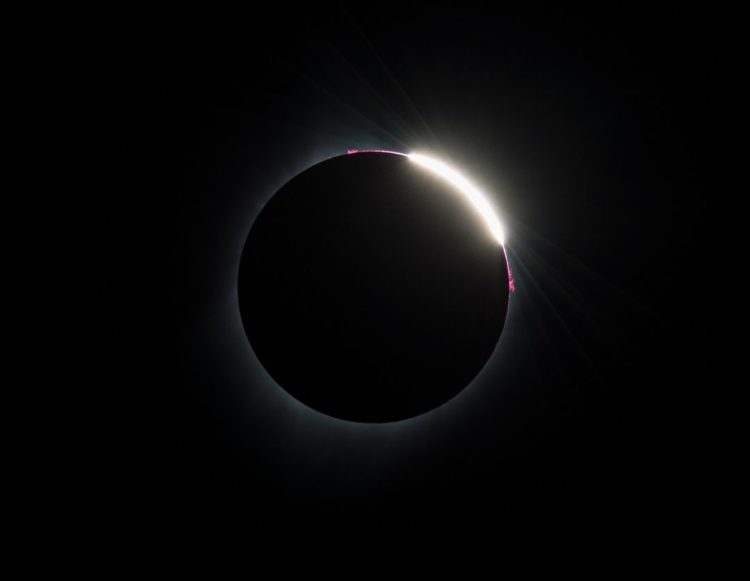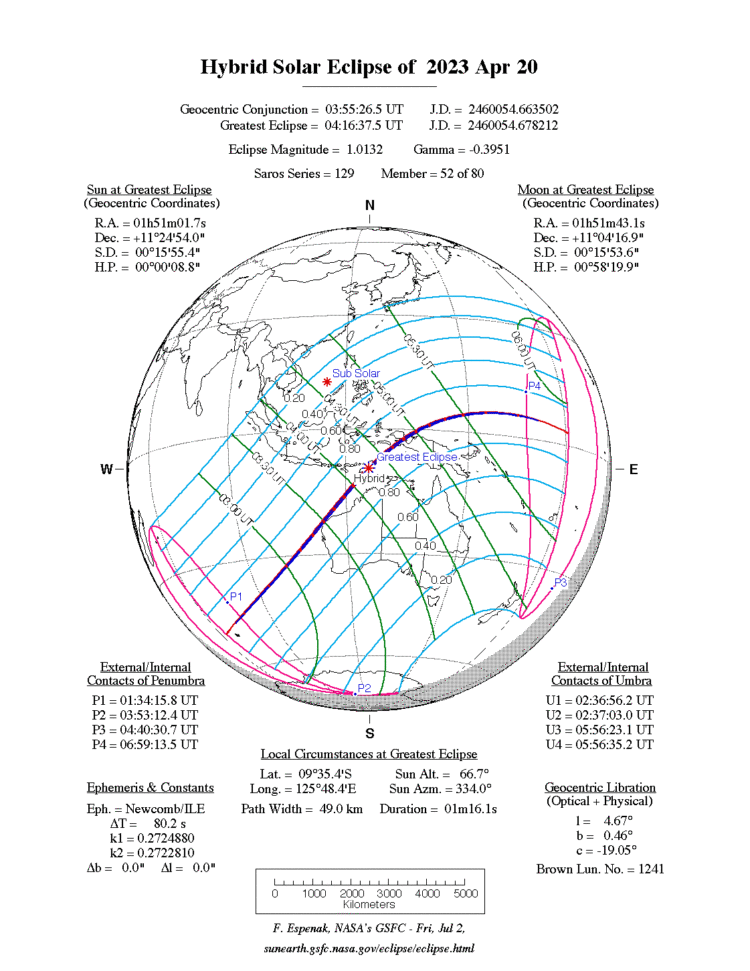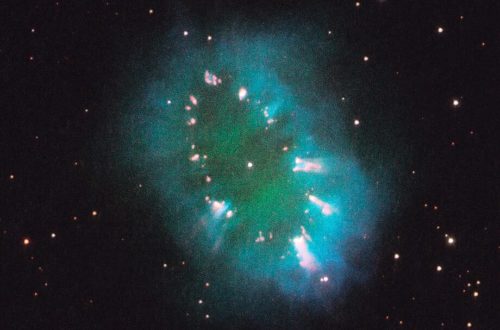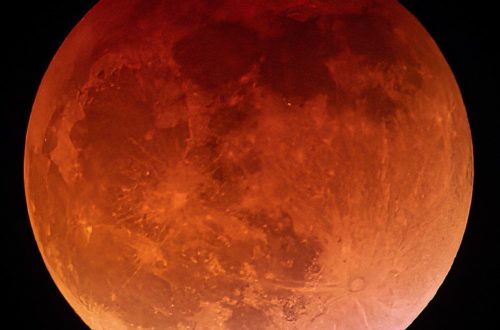What Is a Hybrid Solar Eclipse and How to Observe It

Tomorrow, April 20, there will be a hybrid solar eclipse. You may have heard of total, partial, or annular solar eclipses, but what is a hybrid solar eclipse?
Would you like to be notified of stargazing events?
First let’s start with the basics. A solar eclipse happens when the Moon moves in front of the Sun, obstructing its light and casting a shadow on Earth. Depending on the position of the Moon and Earth, there are three main types of solar eclipses: total, partial, and annular.
Total Solar Eclipse
A total solar eclipse is a rare and spectacular event that happens when the Moon fully obscures the Sun. The Moon’s shadow covers a narrow swath of Earth known as the path of totality during a complete solar eclipse.
The sky darkens and the temperature decreases as the Moon travels in front of the Sun. The Sun’s corona, or outer atmosphere, becomes visible, making for a spectacular sight. Total solar eclipses can last several minutes and are only observable from specific spots on Earth.
Partial Solar Eclipse
A partial solar eclipse happens when the Moon partially obscures the Sun but does not entirely obscure it. The Moon’s shadow falls on a bigger region of Earth during a partial solar eclipse than it does during a total solar eclipse.
Depending on the location of the Moon, the Sun appears as a crescent or a half disc. The sky may darken slightly, but not as dramatically as it would during a total solar eclipse. A partial solar eclipse can be observed from a larger portion of the Earth, although it is not as impressive as a total solar eclipse.
Annular Solar Eclipse
An annular solar eclipse happens when the Moon passes directly in front of the Sun but is too far away from Earth to completely obscure it. The Moon appears as a dark disc in the center of the Sun during an annular solar eclipse, encircled by a dazzling ring of sunlight.
The ring of sunlight is known as the “ring of fire” and is visible from a narrow path on Earth. An annular solar eclipse is less dramatic than a total solar eclipse, yet it is still a sight to behold.
Hybrid Solar Eclipse
A hybrid solar eclipse is a rare type of solar eclipse that combines features of both total and annular eclipses. A hybrid eclipse, also known as an annular-total eclipse, happens when the Moon’s distance from Earth and position in orbit are just right to provide a spectacular celestial show.
The Moon appears somewhat smaller than the Sun during a hybrid solar eclipse, and its shadow falls on Earth, creating a dark region known as the path of totality. The Moon, however, is not quite far enough away from Earth to totally obscure the Sun, resulting in a ring of sunlight or “ring of fire” around the Moon’s silhouette.
The path of totality for a hybrid eclipse is relatively narrow and can be up to a few hundred km wide. The duration of totality is also shorter than during a total solar eclipse, typically lasting only a few seconds to a minute. Hybrid solar eclipses are relatively rare, with only a handful occurring each century.
How to Observe Tomorrow’s Hybrid Solar Eclipse
Observing a hybrid solar eclipse necessitates taking extra care to safeguard your eyes. Even during an eclipse, it is never safe to look straight at the Sun. To properly observe a hybrid solar eclipse, you should use special eclipse glasses or use a solar filter with your camera or telescope.
This eclipse will be seen as a partial eclipse in western Australia, East Timor, and eastern Indonesia, as well as the surrounding territories. More information can be seen in the NASA chart below:

In conclusion, a hybrid solar eclipse is a rare and one-of-a-kind occurrence that combines the characteristics of both total and annular solar eclipses. It produces a breathtaking celestial display that is definitely worth seeing, but it must be seen with suitable safety precautions. If you have the opportunity to witness a hybrid solar eclipse, it will undoubtedly be a memorable and awe-inspiring event.
See more information and other astronomical events in our stargazing calendar for April 2023.
Would you like to receive similar articles by email?





